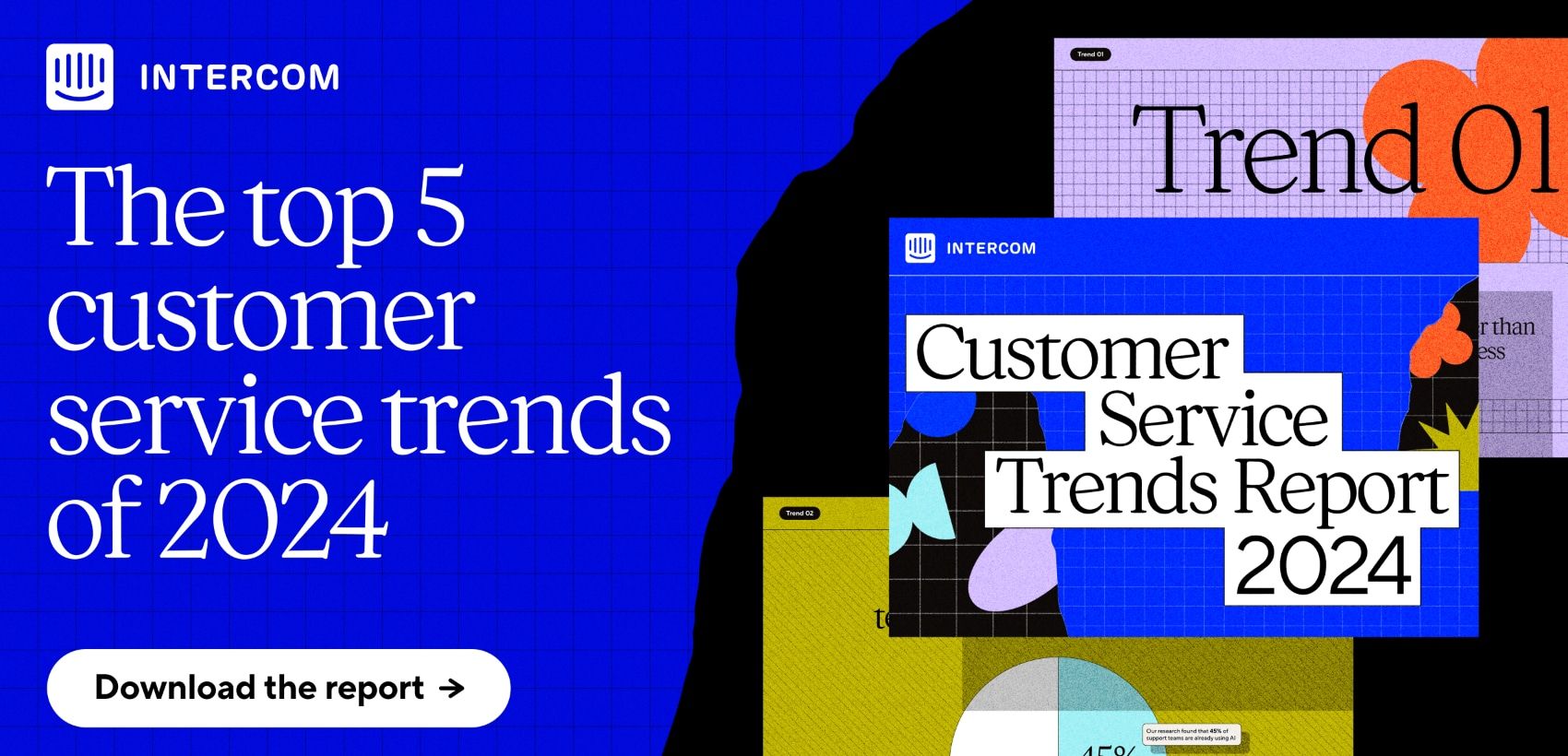
What is customer acquisition cost and why does it matter?
Main illustration: Joshuah Miranda
Growth is good, but growth at any cost is very, very bad.
The best marketers in the world help their companies grow for the long term. However, periodically marketers seem to go through a wave of collective insanity where we forget about the ‘long term’ part of the discussion and start to chase growth at any cost. Whether it’s through inattention, ignorance, or excitement, marketers sometimes make very bad business decisions.
So, how can we protect ourselves from ourselves? How do we make sure we’re not just world-class marketers, but also world-class business people?
One of the most powerful tools we have available is actually just a simple change in how we think about the world. Let’s look at costs.
How to think about costs in your customer acquisition strategy
Imagine you’re coming up on the busiest season of the year, and you’ve been conducting an experiment with your ads to see which will generate the most revenue.
You have three ads in circulation and each ad produced ten customers. If all you care about is optimizing for customer acquisition, you might think all three ads were created equal and allocate your budget accordingly.
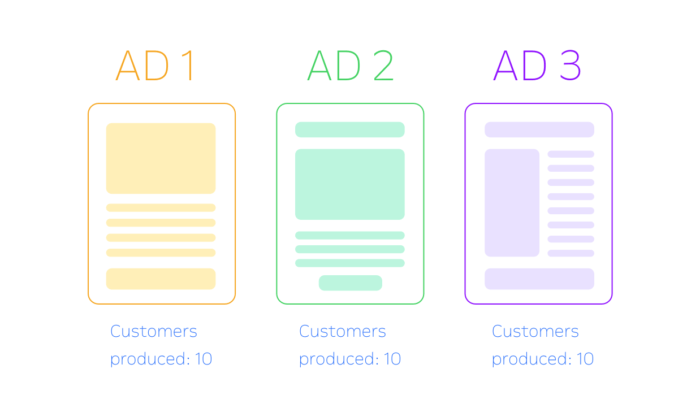
But is that really the right way to look at it? Will treating all three ads equally really help maximize your growth? The answer is unequivocal: no. In fact, doing it that way is downright wrong for your business.
Pure customer acquisition metrics are popular, but dangerously inexact tools for calibrating and scaling your company growth. If you want to grow in a scalable and profitable way, then you have to look beyond customer acquisition and get smart with:
- Customer acquisition cost
- Lifetime value
- Payback periods
What is customer acquisition cost (CAC)?
Customer acquisition cost is the best approximation of the total cost of acquiring a new customer. It should generally include things like: advertising costs, the salary of your marketers, the costs of your salespeople, etc., divided by the number of customers acquired.

It’s a really useful number to help you calibrate your investment and make sure that you’re making the right decisions for your growth.
Why does it matter? Put simply, if your customer acquisition cost is greater than your revenue for a long enough period of time, you’ll go out of business. Kind of a big deal, huh?
Let’s see how this typically works in practice.
How customer acquisition cost (CAC) works day-to-day
Let’s go back to our three ads. They’re all producing the same number of customers – great, right? Maybe not. Let’s take out our trusty calculator and take a deeper look.
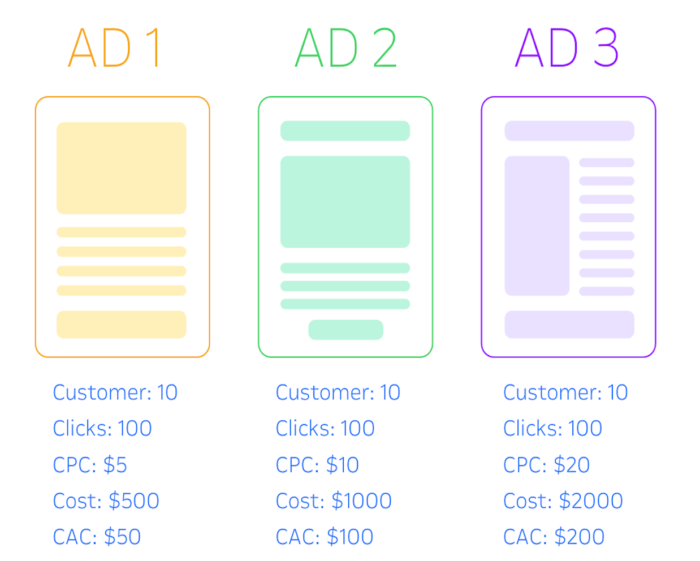
Let’s assume you bought 100 clicks per ad, but paid different amounts for those clicks. For Ad 1 it was $5 per click, for Ad 2 it was $10 per click, and for Ad 3 it was $20 per click.
Multiplying clicks times cost per click tells us that we paid $500 for 10 customers with Ad 1, $1000 for 10 customers with Ad 2, and $2000 for 10 customers with Ad 3.
That’s helpful, but it’s much easier for a poor marketer’s brain to think on a per customer basis, so let’s just divide the # of customers into the cost for each ad and now we see that your cost-per-customer is really different across each ad. With Ad 1 we are paying just $50 per customer! Looks like we should be running Ad 1 as much as possible and shutting down the other two as soon as possible.
This level of information is already a breakthrough from where we started. By introducing basic costs into the mix, we now have a much smarter understanding of which ad to push aggressively over the holidays and which to retire immediately.
But is that the best we can do? Not so fast.
If all you do is introduce advertising costs into how you optimize your tactics, you’re already making progress, but advertising is just a part of the cost of acquiring a customer:
- You almost certainly have a marketer sitting in-seat reviewing data and planning your ad strategy – you pay them a salary, right?
- You probably had an agency help place that ad – they take a fee, right?
- Someone had to write the copy and design the creative assets – you paid their retainer, right?
- When the customer converted in your shopping cart, you had to pay a payment processing fee, right?
- If you have a sales team, what about their salaries and commissions?
All of these factors should be accounted for in your CAC calculations to make sure you’re doing an honest accounting of what it’s costing you to acquire a customer.
Because all of that data comes from different sources at different times, what that means in practice is that you’ll be operating at two speeds with your CAC calculations. On a daily, weekly, and monthly basis you’ll be optimizing using the CAC and customer volumes that your advertising tools report with your online marketing team. On a longer term basis (monthly, quarterly, and annually) you’ll be using a more comprehensive view of CAC with your marketing, sales, and finance teams.
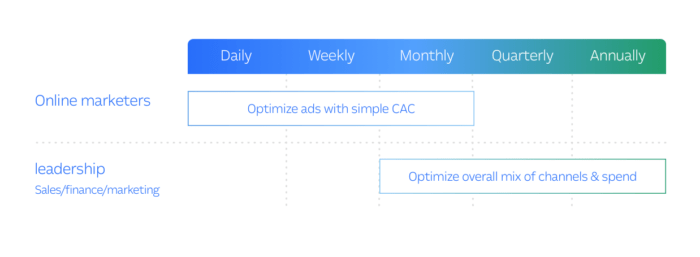
An even better way to use CAC: pair it up with customer lifetime value (LTV)
That said, all this focus on customer acquisition cost can actually really cripple your business. And here is why: costs are NOT necessarily a bad thing!
“Costs are NOT necessarily a bad thing”
In a growing business, costs should just be viewed as investments. Some of them are smart investments, others make no sense. How can you tell the difference?
By looking at customer lifetime value (LTV), or the revenue you get from a customer over their entire lifetime working with your business.
What is customer lifetime value (LTV)?
Lifetime value is basically the revenue you get from any given customer over some time horizon. Most businesses typically use a 1-, 3- or 5-year LTV calculation. If your company hasn’t been around that long, you can do some relatively simple (for someone smarter than me) modeling on subscription renewal rates (in a subscription business model) or repurchase rates (in a more transactional business). LTV can be really challenging to understand in a young or digital business where there isn’t a huge amount of historical data, but it’s an absolutely critical metric you can use to complement your understanding of cost and increase the maturity of your business decision making.
How to calculate LTV/CAC and why it’s useful
In simple terms, LTV/CAC helps answer the question, will the customers we’re acquiring contribute more revenue than they cost?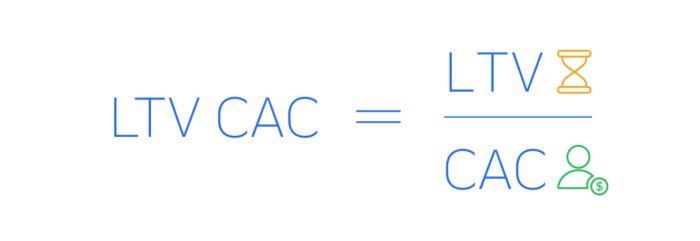
Really exciting things start to happen when you are able to segment your LTV and your CAC by the definitions most interesting to your business. Let’s go back to our three ads to understand the impact of adding in LTV.
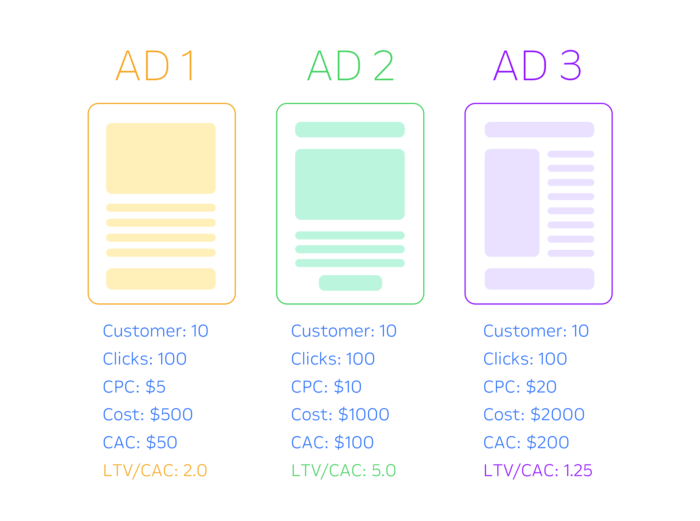
By introducing the notion of lifetime value we’ve shifted our understanding of which ad is ‘best.’ We can now see that even though initially Ad 1 was the clear winner in terms of the value it adds to our business Ad 2 is actually a better place to put our investment. Over time, Ad 2 will contribute the most value.
Why LTV effectively increases your allowable CAC
Understanding LTV/CAC generally helps marketers unlock additional budget for their programs. For instance, it can help you determine whether you should be allowed to spend more acquiring larger customers who’ll likely stick around longer and pay more in their lifetime.
This is what an “allowable CAC” represents. Your allowable CAC is the maximum acceptable amount to pay for a customer. It’s essentially a cap we pre-negotiate with our finance team. You can justify a higher allowable CAC if your LTV is higher.
Here are some other really interesting ways of looking at LTV/CAC and questions you can answer:
Channel level metrics:
- By channel: What is the profitability of my advertising channel vs. affiliate advertising?
- By sub-channel: What is the profitability of my Google advertising vs. Facebook advertising?
- By campaign: What is the profitability of my Google non-brand advertising vs. Google brand advertising?
- By keyword: What is the profitability of my bids on a keyword?
Segment level metrics:
- By size: What is the profitability of a mid-market customer vs. an enterprise customer?
- By geography: What is the profitability of a Brazil customer vs. a France customer?
- By product What is the profitability of a Des’s Dog Food customer vs. a Des’s Dog Toy customer?
The possibilities are endless, though a word of caution – don’t get so caught up in this that you start doing too much micro-optimization. You could cut your business by 75 different dimensions in pursuit of a growth opportunity, or just focus on the big ones and actually go and do your job. I suggest the latter.
“You could cut your business by 75 different dimensions in pursuit of a growth opportunity, or just focus on the big ones and actually go and do your job. I suggest the latter”
An even better (perhaps the best) way to think about CAC
As my Finance colleague once wrote, LTV CAC is where most marketers end their analysis. But they’d be missing a major third variable: payback periods. This is the PhD level calculation most Finance people think about but most business people (especially marketers) barely acknowledge. Our head of Finance, Bobby, uses this as a test for evaluating performance marketers, and we VERY rarely find someone who passes on the first try.
Full disclosure: I failed. :)
A payback period is the rate at which you can get cash from your paying customers; this dictates how quickly you can reinvest in your business and ideally is a component of how you calculate CAC.
Payback periods matter because in a well-run business cashflow matters. It’s better to have money today that lets you scale and grow more quickly than it is to have money 5 years from now.
How to spread CAC across channels
Very small businesses tend to grow with a single tactic or channel (e.g., events). That makes it really simple to compute your costs, because it’s all visible and straightforward. However, as your business gets more complex you have more channels and more ways that potential customers interact with your company, and that means you have to start thinking about CAC in a new way. Learn more about this in our free book, Intercom on Marketing.
Bigger and faster growing companies tend to combine many sets of tactics, each with its own CAC characteristics, into an overall portfolio of marketing tactics. Some will have very low CAC (e.g., a great blog) while others will be very expensive (e.g., bidding on competitor terms in Google Search). By understanding your CAC at a channel level, you can balance your budget across different aspects of your portfolio depending on what your business needs.
Need to grow super fast at any cost? Spend big in high volume channels even at a high CAC.
Want to optimize for company valuation? Focus on LTV/CAC, to maximize customers that will pay you the most over the longest period of time.
Need to optimize for cash? Look for ways of acquiring customers cheaply and with a fast pay-back period.
Looking to lower your CAC? Here are 3 ways live chat can help
Live chat is super interesting for performance marketers because it is one of the only communication channels which threads an entire customer journey, from prospect to loyal customer. It enables teams to use conversational marketing and conversational customer engagement strategies to engage leads and customers in a personal way.
1. It removes friction for high-intent leads
Live chat lets you go from prospect to Close Won in a single chat session. What’s more, with the right live chat product you can proactively engage visitors who meet certain qualifying criteria. That means you’re spending a lot less of your marketing efforts and money driving people down the funnel.
2. It increases LTV
Our own data has found that customers who chatted with us first pay 13% more over their lifetime. They spend more with us over time because they’re more loyal over the long run – they have a relationship.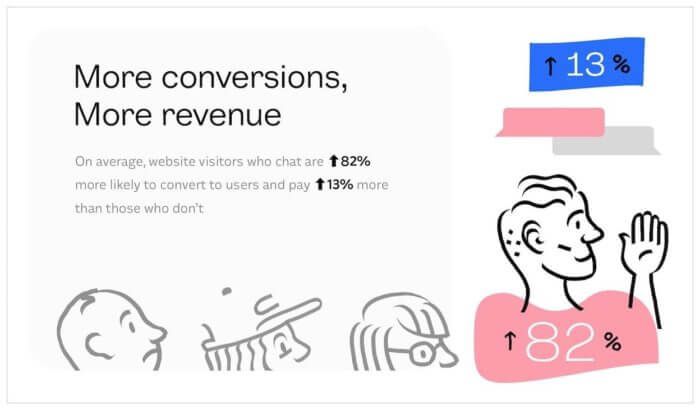
3. It gives you more opportunity to sell
Live chat gives companies more opportunities to talk to visitors and customers at the moment they’re most receptive to learning about you. More opportunities to talk means more opportunities to sell. If a seller is doing a good job, they’re only selling useful features and ideas that help that customer do their jobs better.
Growth at any cost is a recipe for disaster – get started today
The challenge of including LTV, CAC and payback periods in your calculations is that it’s difficult to do. Data tends to be messy and inconsistent and startups especially haven’t been around long enough to accumulate quality data.
Nonetheless, as responsible marketers trying to drive growth, you owe it to your business to use costs and lifetime value to optimize your programs. If all you can do to get started is use the costs reported from your advertising tools, then so be it – that’s better than nothing.
If you can partner with your finance team on LTV and payback period – even better. But no matter what, don’t wait. Growth at any cost is a dangerous way to run a business.
Frequently Asked Questions about Customer Acquisition Cost

